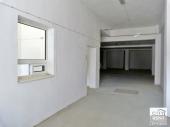|
| A short history of Bulgaria |
|
|
 Situated on the crossroads between Europe and Asia, the Bulgarian territory has been populated since ancient antiquity. All the people that once inhabited the area – Thracians, Bulgarians and Slavonic have left their fingerprint on the world cultural treasury.
Situated on the crossroads between Europe and Asia, the Bulgarian territory has been populated since ancient antiquity. All the people that once inhabited the area – Thracians, Bulgarians and Slavonic have left their fingerprint on the world cultural treasury.
Prehistoric finds in some of the caves prove that humans started living here during the neolith. The current territory of Bulgaria was once the center of the Thracian civilization which used to dominate the Balkan Peninsular.
In the second half of the 7th century a people of Turkish origin – the Proto-bulgarians settled at today’s northeastern Bulgaria. Uniting the Slavonic, both people form a country called Bulgaria, recognized by Byzantine in 681. The leader of the Proto-bulgarians – Khan Asparoukh became the head of the state. The town of Pliska is announced for the first Bulgarian capital.
In 885 the two Bulgarian brothers Cyril and Methody invented the Slavonic literacy which became official by the time that Christianity was accepted for that official religion. The Slavonic literacy then spread in Russia and Serbia.
During the reign of Tsar Simeon (893-927) is the “Golden Age for the Bulgarian Literacy”, and the territory of the country is so big that it borders the Black Sea, the Mediterranean Sea and the Aegean Sea.
In 1018 Bulgaria was conquered by Byzantine. The Bulgarians started fighting back and in 1186 a rebel led by the boyar brothers Asen and Peter made the Byzantine conquerors leave the Bulgarian territories. The Second
Bulgarian Kingdom was formed and the town of Tarnovo became the capital.
During the reign of their little brother Kaloyan (1197-1207), Bulgaria restored its lost glory. During the reign of Tsar Ivan Asen II (1218-1241) the Second Bulgarian Kingdom is in the flower of its strength, instituting its political predominance in southeastern Europe. The country is again bordering three seas – the Black Sea, the Aegean Sea and the Adriatic Sea. The economy and the culture are flourishing. After years of cultural stagnancy the country is flourished till the end of the Second Bulgarian Kingdom (1186-1396). Many literature and architectural works with huge international significance were created during the cultural upsurge in 13th and 14th century.
The misunderstandings among the boyars split the country into two kingdoms – The Kingdom of Vidin and The Kingdom of Tarnovo. The country gets weaker and fell prey to the Osman Empire in 1396. Conquered by the Turkish, Bulgaria does not exist on the map for five centuries.
In 1762 Paisii Hilendarski wrote the book “History of Bulgarians and Slavonic” which marks the beginning of the National Revival Period and stimulates the national liberation movement. Its culmination - The April Rebel in 1876 leads to the liberation of Bulgaria after the Russian – Turkish war in 1877 – 1878.
As a result of the Russian – Turkish war for liberation, Bulgaria becomes a free country but a national union is not achieved. The former Bulgarian territories are split into three parts – The Principality of Bulgaria, East Rumelia, Thracia and Macedonia. Except for The Principality of Bulgaria the rest of the Bulgarian territories are ruled by the Osman Empire.
In 1885 The Principality of Bulgaria and East Rumelia merged to unite. In 1908 Bulgaria was again officially pronounced as an independent country.
After the Second World War in 1944 the Soviet Army occupied Bulgaria and the Communist Party held power. In 1946 the monarchy was replaced by the republican form of government. Later on the industry, the trade and all banks were nationalized and all the private land was taken by the government.
The democratic changes in Bulgaria started on the 10th of November 1989.As in most of the East European countries the political, economical and social relations changed completely.
Today Bulgaria is a member of NATO and in 2007 has become a part of the European Community.
Source: bgp.bg
|
| Monday, Jun 21, 2010 |
|
|
|
|
| » RENTALS |

|
|
|
| Commercial |
€ 770 |
|
| Location: |
Veliko Tarnovo |
|
|

|